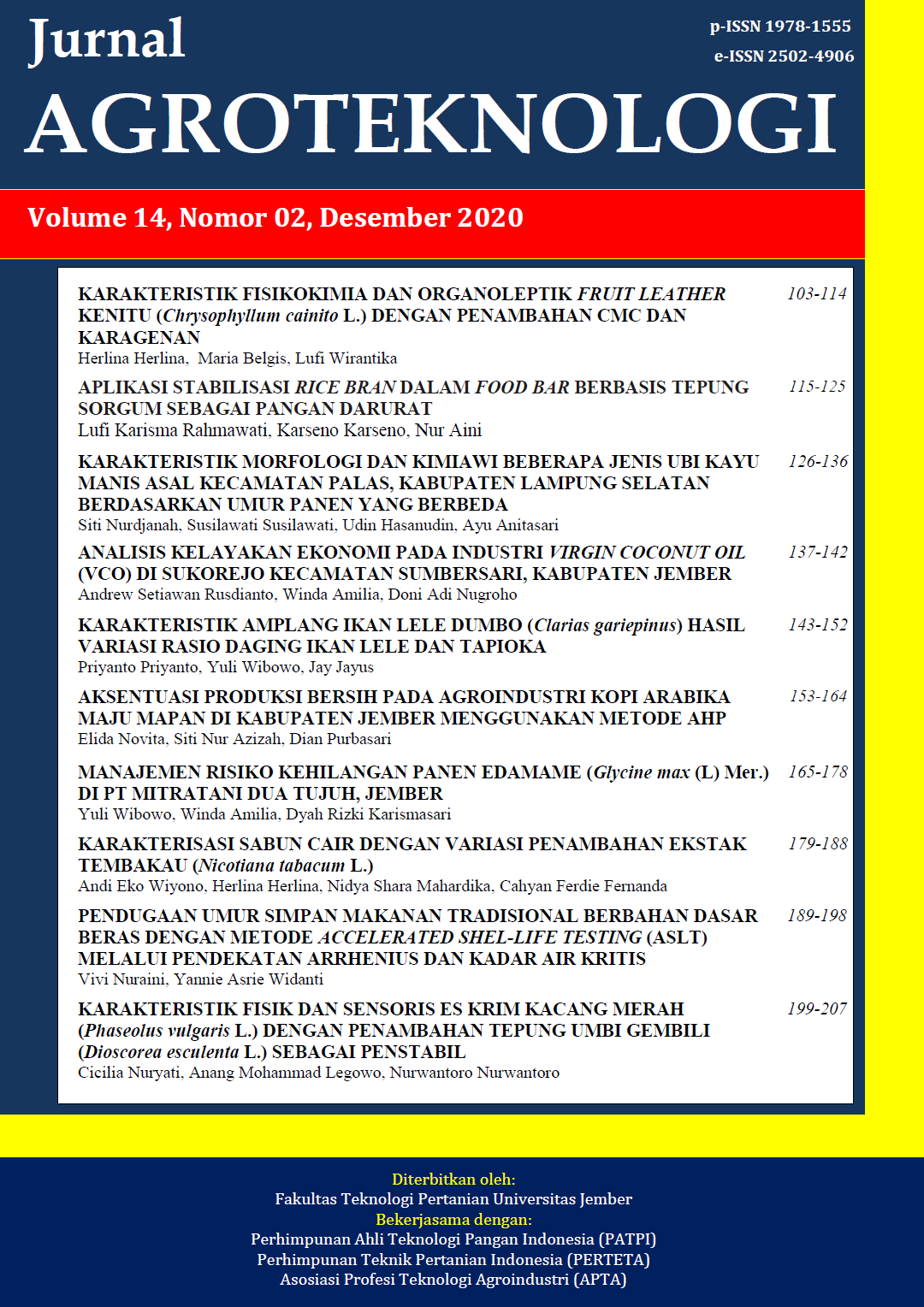KARAKTERISTIK AMPLANG IKAN LELE DUMBO (Clarias gariepinus) HASIL VARIASI RASIO DAGING IKAN LELE DAN TAPIOKA
Abstract
The demand for amplang crackers is now increasing. However, the price of its raw material, mackerel fish, is generally higher compare to other fishes, causing the higher cost of this type crackers production. Effort to explore other fish as an alternative raw material is required to overcome the problems. Catfish is one of the choices to be used as raw material since this fish is more available in a market in a lower price, but the protein properties of this fish is different to mackarel, which will be possible to affect the nature of the crackers obtained. To produce catfish amplang crackers to be similar to common amplang product, it is necessary to find out the right composition of catfish and tapioca flour used. Therefore, the purpose of this research was to characterize physico-chemically and organoleptically, the catfish amplang crackers made under different ratio of fish flesh and starch. The experiment was designed using completely randomized design. Physico-chemical data obtained were analyzed using ANOVA, while the organoleptic test data were examined using chi-square method. The effectiveness test was carried out to find the proper ratio of raw materials composition used. The results showed that the higher the ratio of the fish flesh and the starch composition, the lower the texture value of the crackers as an indication of the decrease of its crispness. Although the lightness of the crackers was lowered by the addition of more starch to the dough, its linear expansion and hygroscopicity were not affected. The results of organoleptic test showed that the panelist was prefer to a higher crispness of crackers. The most preferable cracker was the one with 1:2.25 ratio of catfish flesh and starch, showing the characteristic of 1.80% moisture, 2.08% ash, 5.75% protein, 23.55% fat, and 66,93% carbohydrate.
Keywords: cracker, catfish, tapioca starch

This work is licensed under a Creative Commons Attribution-ShareAlike 4.0 International License.
Jurnal Agroteknologi has CC-BY-SA or an equivalent license as the optimal license for the publication, distribution, use, and reuse of scholarly work. Authors who publish with this journal retain copyright and grant the journal the right of first publication with the work simultaneously licensed under a Creative Commons Attribution-ShareAlike 4.0 International License that allows others to share the work with an acknowledgment of the work's authorship and initial publication in this journal.
 JURNAL AGROTEKNOLOGI
JURNAL AGROTEKNOLOGI 










.png)

